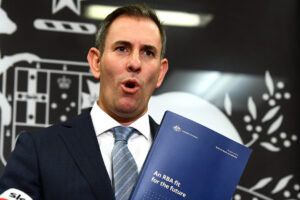Putting the Finkel Review to the test: what to look out for
Key areas to assess whether the Finkel Review will give us what we need to ensure Australia has a 21st century energy system
What is the Finkel Review for?
The objective of the Finkel Review is to provide a blueprint for national policy, legislative, governance and rule changes required to maintain the security, reliability, affordability and sustainability of the national electricity market.
Assessing the Finkel Review: How do we review a review?
The objective of a policy instrument such as a Low Emission Target (LET) or a Clean Energy Target (CET) should be to help Australia to reduce greenhouse gas emissions by accelerating the transition away from conventional coal fired electricity.
“A well-designed LET could be the breakthrough which finally integrates climate and energy policy. But a badly designed scheme could lock Australia into expensive, high emissions infrastructure.”
— Ben Oquist, Executive Director of The Australia Institute
In evaluating a specific LET or CET proposal it is important to examine the specific design features, as well as the overall structure, in the context of the overall policy objective of hastening the transformation of the Australian electricity system.
As has been clear from past debates about energy policies such as the CPRS and the recent Emission Intensity Scheme (EIS), the design differences within a scheme are as important as the differences between schemes.
“A well-designed LET could be the breakthrough which finally integrates climate and energy policy. But a badly designed scheme could lock Australia into expensive, high emissions infrastructure,” said Ben Oquist, Executive Director of The Australia Institute.
The Finkel Test: Putting the Finkel Review to the test
Key areas to assess whether this review gives us what we need to ensure Australia has a 21st century energy system:
1. Ambition. The target must reflect the Paris pledge. The target should be able to be ramped up in line with more ambitious action on emissions as recommended by climate scientists and the Paris agreement.
2. Low Emissions. It is important that a LET defines genuinely low emissions. A strong trajectory is required to ensure that in future years Australia will not be burdened with new higher emissions technology. A badly designed scheme could, for example, result in over-investment in gas-fired electricity.
3. Eligibility and Crediting. (a) ensuring credits are issued in proportion to the extent to which emission intensity is below the threshold; and (b) ensuring there are appropriate baselines so credits are only issued to new generators or, if they are issued to pre-existing generators, they only receive credits for generation above their historical baselines.
4. Storage. Ensuring there are appropriate, technology neutral incentives for the provision of storage, which do not involve the imposition of mandatory obligations on renewable generators.
5. Gas price assumption. The plan should account for potential gas price rises that the Australian government has no control over since linking domestic gas to the Asian market. There must also be improved transparency and regulation of domestic gas production.
6. Grid stability. The report should recommend technology neutral fast frequency response mechanisms needed to ensure grid stability. It should also fully consider all options to replace rotational inertia rather than insisting the large amounts of inertia will always be required.
7. Market rules. The report should recommend urgent rule changes, such as the 5-minute settlement rule, which would facilitate demand management and allow batteries to compete fairly in the national market.
The Finkel review will be released in Tasmania at COAG at 2.30pm AEST 9 June 2017.
Between the Lines Newsletter
The biggest stories and the best analysis from the team at the Australia Institute, delivered to your inbox every fortnight.
You might also like
Epic Fail. Dutton’s National Interest Test would snuff out his gas plan
Peter Dutton says he’ll approve the North West Shelf (NWS) gas expansion within 30 days if he wins the election.
Looking forward, looking back | Between the Lines
The Wrap with Amy Remeikis In October 1980, before almost half the people voting in this election were born, Ronald Reagan posed what became one of the defining questions of modern politics. Are you better off today than you were four years ago? Reagan would go on to beat Carter and along with Margaret Thatcher,
Another hold likely. So, what was the point of the RBA review?
Will the RBA cut interest rates tomorrow? Probably not. It’s Groundhog Day and they’re locked into repeatedly making to same mistake over and over again. A mistake that the recent RBA review criticised them for making just before the pandemic.


